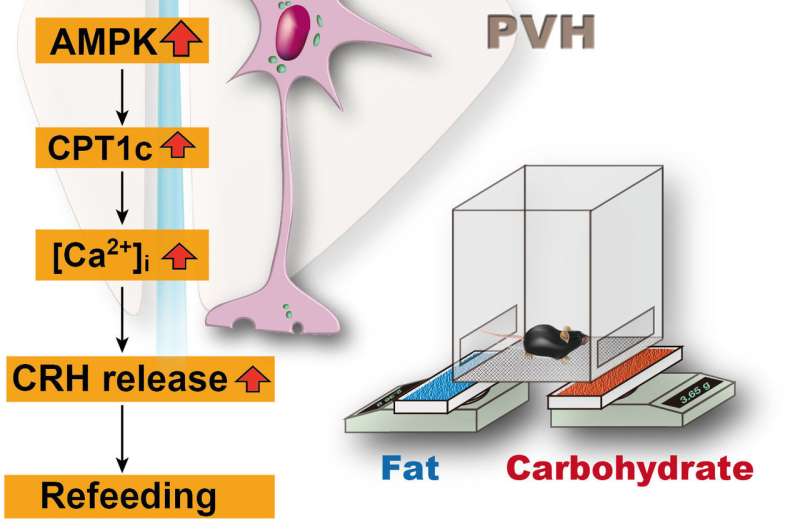Researchers identify a specific group of neurons that is sufficient and necessary to induce dietary

The preference for a high-fat diet (HFD) among multiple palatable diets has increased in the modern world, whereas carbohydrate craving is often induced by stressful life events and mood disturbances. However, the mechanism responsible for selection between a high-carbohydrate diet (HCD) and a high-fat diet (HFD) remains unknown.
An international team of researchers centered at the National Institute for Physiological Sciences (NIPS) has identified that activation of a subset of corticotropin-releasing hormone (CRH)-positive neurons in the paraventricular hypothalamus (PVH) is sufficient and necessary to induce dietary preference for carbohydrate over fat. The findings were reported in Cell Reports.
Food selection is known to be regulated by food palatability. However, food selection is also influenced by nutritional state as well as food palatability. When rodents are refed after fasting, they select a HCD over a HFD. The researcher found that activation of a subset of CRH-positive neurons in the rostral region of the PVH induces selection of a HCD over a HFD in mice during refeeding after fasting, resulting in a rapid recovery from the change in ketone metabolism. These neurons manifest activation of AMP-activated protein kinase (AMPK), a metabolic sensor from yeast to mammals, during food deprivation, and this activation is necessary and sufficient for selection of a HCD over a HFD. Furthermore, this effect is mediated by carnitine palmitoyltransferase 1c (CPT1c) that expresses in mitochondria and endoplasmic reticulum in neurons. Thus, they identified the specific neurons and intracellular signaling pathway responsible for regulation of the complex behavior of selection between a HCD and a HFD.
Corresponding author Yasuhiko Minokoshi says, "dysregulation of food selection behavior is associated with stressful life events in humans. CRH neurons in the PVH are activated by stress. This study will contribute to the better understanding of the molecular mechanisms underlying the effects of stress and obesity on food selection behavior."
More information: "Activation of AMPK-regulated CRH neurons in the PVH is sufficient and necessary to induce dietary preference for carbohydrate over fat" Cell Reports (2018).



















